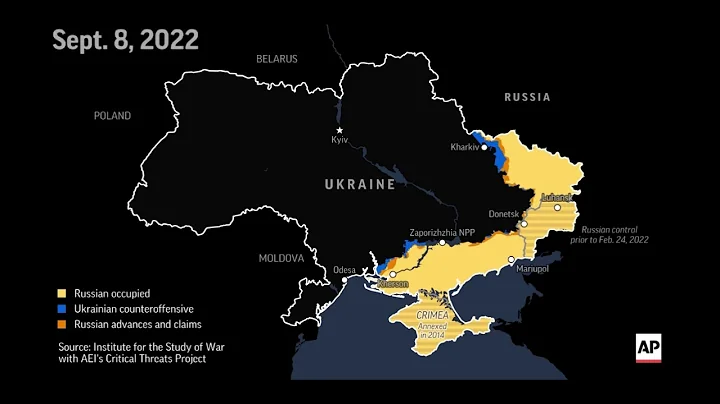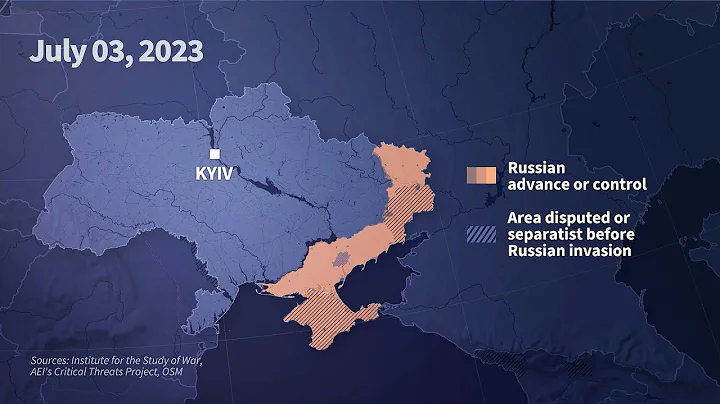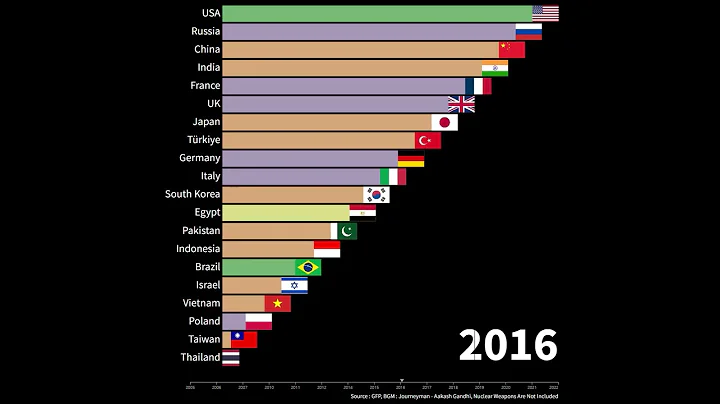I saw a video in the past two days. On the Russian-Ukrainian battlefield, it is said to be an anti-aircraft missile position of the Russian army in the Lugansk area. During night operations, when missiles and were continuously launched into the air, everything was normal for the first three missiles. After the missile was launched, it didn't fly very high. It immediately turned around to go home, and then exploded so brightly that the position was as bright as day.
Then I saw some self-media began to speculate that Russia had encountered some black magic from the other side, causing the missile to turn back and blow up its own nest as soon as it was launched.
Not long after, there was another video on the 25th. It was said to be the Ukrainian army's anti-aircraft missile position firing, and it was also launched continuously. The first missile was normal, and the second missile immediately started to make a sharp turn with a small radius in the air. A very regular and beautiful spiral was drawn in the air, just like the old-fashioned sofa springs suddenly popped out of the sofa in the cartoons we used to watch.

Let’s first take a look at what missiles were involved in the accident. In the previous video, due to the night light problem, we couldn’t see clearly what missiles were firing. From the trajectory of the missiles, it was obvious that they were launched at an angle. It happened that a launch vehicle also had four missiles. missiles. The latter video is in daytime, but the location of the missile launch is blocked. We can’t see the launch vehicle clearly. However, there is also the launch vehicle of Beech on the right side of the screen, so some people think that the accident this time was also Beech, but Ukraine this In the video, the missile takes off vertically, and then the engine ignites in the air, which is more in line with the characteristics of vertically launched missiles such as S300, so some people suspect that it is the S300.
In fact, whether it is Beech or S300, they are no strangers to the Chinese military research and development department. When the navy introduced the Russian modern-class guided missile destroyer , the anti-aircraft missiles on the ship were the naval version of Beech. Before China's Hongqi 9 was successfully developed and equipped with troops, the S300 was also our most important long-range air defense firepower. Therefore, we are all very familiar with the guidance systems and control processes of these weapons.
Beech has a semi-active guidance system. The fire control radar on the ground illuminates the target, and the missile tracks the target based on the target's echo. It is similar to teasing a cat with a laser stick. Wherever the light spot shines, the cat will pounce. The S300 family is basically a TVM system, and it is also a ground radar irradiation target. The missile receives the target's radar echo, but the missile does not do any complex calculations or make its own decisions. Instead, it sends the data back to the ground, and the equipment on the ground The signal processing and computing capabilities are better. After calculating the results, the flight instructions are used to tell the missile where to pursue. However, our People's Liberation Army does not like this system. We have a very good active radar seeker and do not need to rely on the ground to process signals at all. Issue instructions. The whole process is communication between the missile and the ground radar, so some self-media said it was interference from the satellite . Sorry, these two missiles have nothing to do with satellite guidance.

Many friends are surprised by this kind of failure. In fact, if you often look at the shooting range test firings of the armies of various countries, you will find that it is not uncommon. Brownian motion after a missile is launched is actually not a country’s unique patent.
A certain type of long-range air defense missile we introduced that year had a similar phenomenon during major exercises. It lost control after launch and almost threatened the viewing platform where the leaders were sitting. This situation is usually caused by a malfunction in the missile's flight control system, which prevents the missile from turning normally according to the control instructions. Then, the more the instructions try to correct the trajectory, the more chaotic the missile's flight rules become, forming an out-of-control positive feedback. So why did such a failure occur that year? It was because those missiles had reached their shelf life.
Many components in the missile also have a shelf life under inventory conditions. For example, the shelf life of the S300 is 10 years. Every ten years, the missile must be inspected or maintained to extend its life. The missiles we bought back then had to be sent back to the country of production for maintenance and repair, and then brought back. It wasn't until we had Red Flag 9 that we completely got rid of this situation.

As for the Russian-Ukrainian battlefield, the anti-aircraft missiles of both sides are basically produced by the Russian military industry system. I am afraid that it will not be possible for the Uzbek army’s missiles to be sent to Russia for maintenance for many years. Russian missiles have to deal with so many drones, and some of the inventory may be lost. Moved to the front line.
After all, to fight a big war, you still have to have money.





















